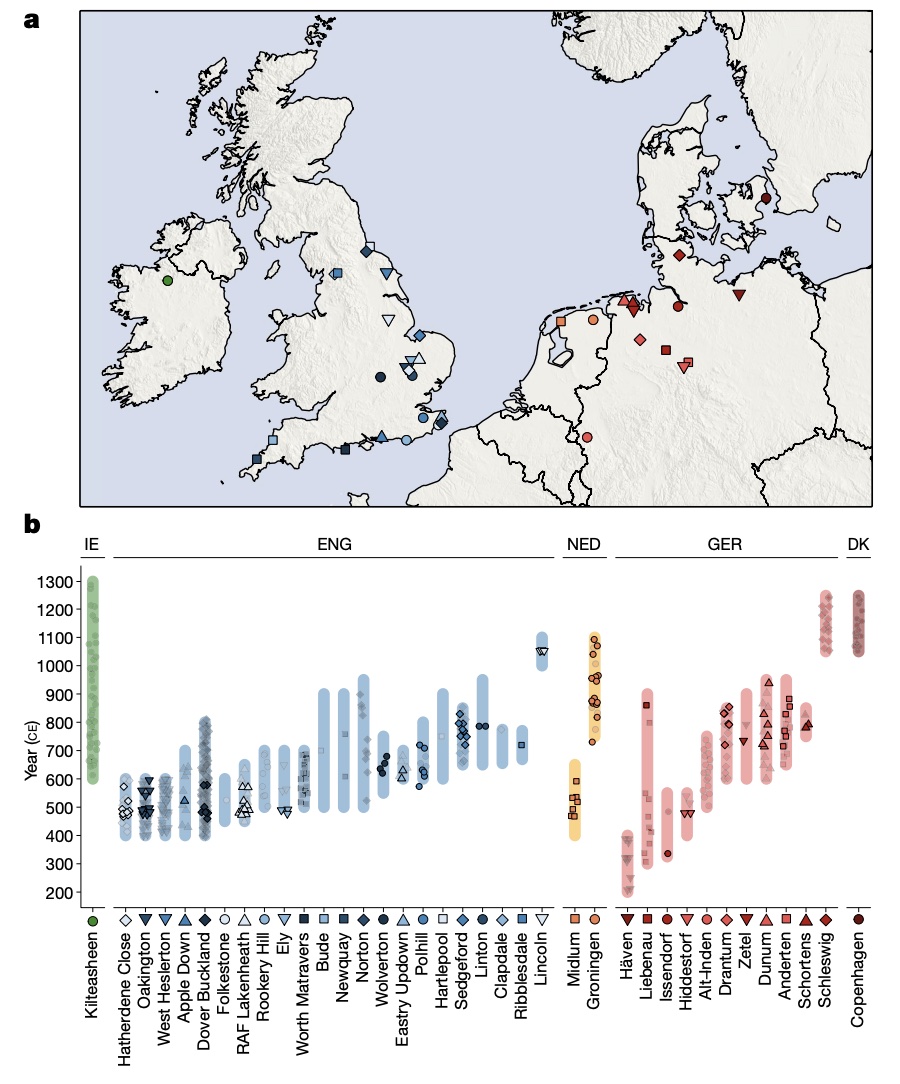Gretzinger et al. 2022

Authors: Joscha Gretzinger, Duncan Sayer, Pierre Justeau, Eveline Altena, Maria Pala, Katharina Dulias, Ceiridwen J Edwards, Susanne Jodoin, Laura Lacher, Susanna Sabin, Åshild J Vågene, Wolfgang Haak, S Sunna Ebenesersdóttir, Kristjan H S Moore, Rita Radzeviciute, Kara Schmidt, Selina Brace, Martina Abenhus Bager, Nick Patterson, Luka Papac, Nasreen Broomandkhoshbacht, Kimberly Callan, Éadaoin Harney, Lora Iliev, Ann Marie Lawson, Megan Michel, Kristin Stewardson, Fatma Zalzala, Nadin Rohland, Stefanie Kappelhoff-Beckmann, Frank Both, Daniel Winger, Daniel Neumann, Lars Saalow, Stefan Krabath, Sophie Beckett, Melanie Van Twest, Neil Faulkner, Chris Read, Tabatha Barton, Joanna Caruth, John Hines, Ben Krause-Kyora, Ursula Warnke, Verena J Schuenemann, Ian Barnes, Hanna Dahlström, Jane Jark Clausen, Andrew Richardson, Elizabeth Popescu, Natasha Dodwell, Stuart Ladd, Tom Phillips, Richard Mortimer, Faye Sayer, Diana Swales, Allison Stewart, Dominic Powlesland, Robert Kenyon, Lilian Ladle, Christina Peek, Silke Grefen-Peters, Paola Ponce, Robin Daniels, Cecily Spall, Jennifer Woolcock, Andy M Jones, Amy V Roberts, Robert Symmons, Anooshka C Rawden, Alan Cooper, Kirsten I Bos, Tom Booth, Hannes Schroeder, Mark G Thomas, Agnar Helgason, Martin B Richards, David Reich, Johannes Krause and Stephan Schiffels
Abstract: The history of the British Isles and Ireland is characterized by multiple periods of major cultural change, including the influential transformation after the end of Roman rule, which precipitated shifts in language, settlement patterns and material culture1. The extent to which migration from continental Europe mediated these transitions is a matter of long-standing debate2–4. Here we study genome-wide ancient DNA from 460 medieval northwestern Europeans—including 278 individuals from England—alongside archaeological data, to infer contemporary population dynamics. We identify a substantial increase of continental northern European ancestry in early medieval England, which is closely related to the early medieval and present-day inhabitants of Germany and Denmark, implying large-scale substantial migration across the North Sea into Britain during the Early Middle Ages. As a result, the individuals who we analysed from eastern England derived up to 76\% of their ancestry from the continental North Sea zone, albeit with substantial regional variation and heterogeneity within sites. We show that women with immigrant ancestry were more often furnished with grave goods than women with local ancestry, whereas men with weapons were as likely not to be of immigrant ancestry. A comparison with present-day Britain indicates that subsequent demographic events reduced the fraction of continental northern European ancestry while introducing further ancestry components into the English gene pool, including substantial southwestern European ancestry most closely related to that seen in Iron Age France5,6. Archaeogenetic study of ancient DNA from medieval northwestern Europeans reveals substantial increase of continental northern European ancestry in Britain, suggesting mass migration across the North Sea during the Early Middle Ages.